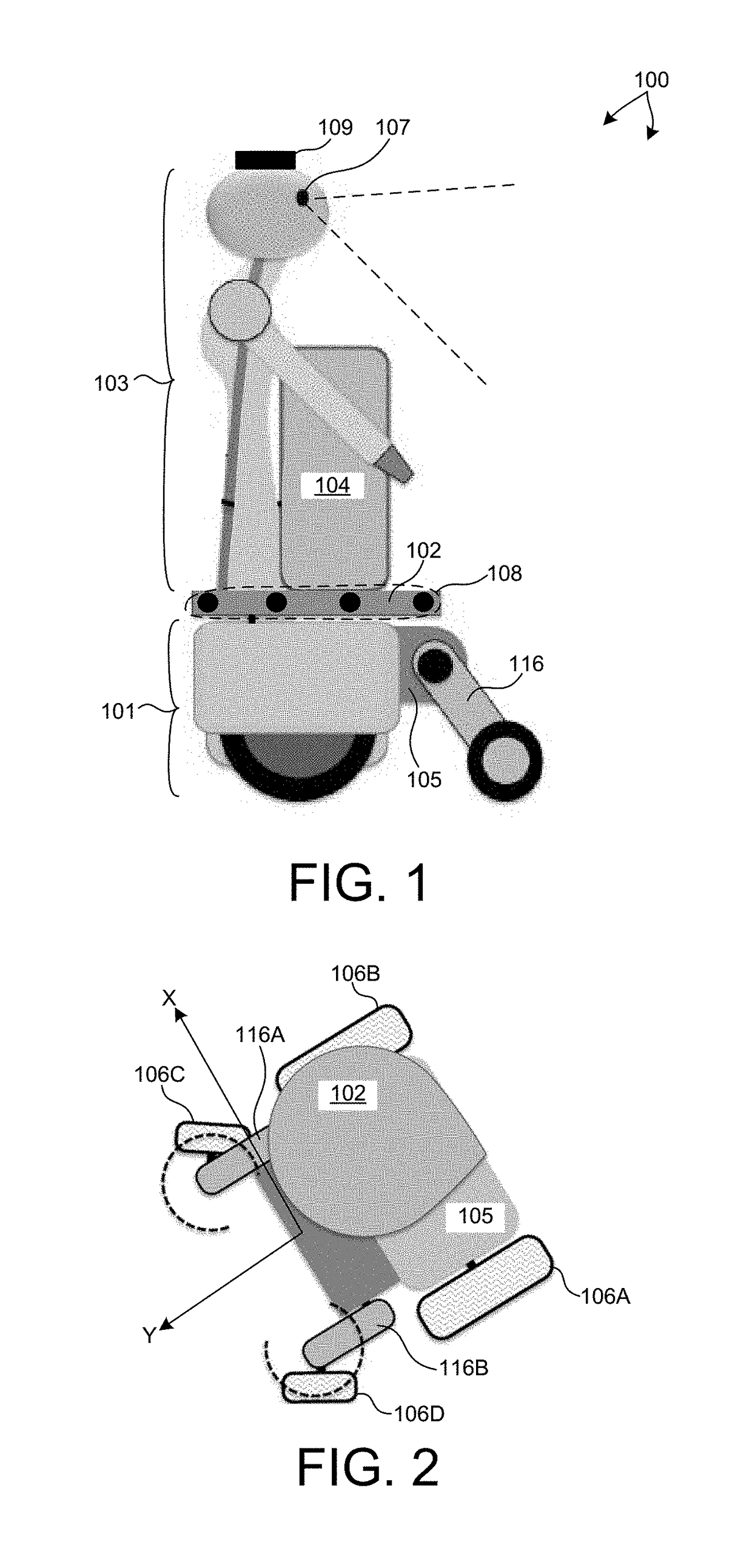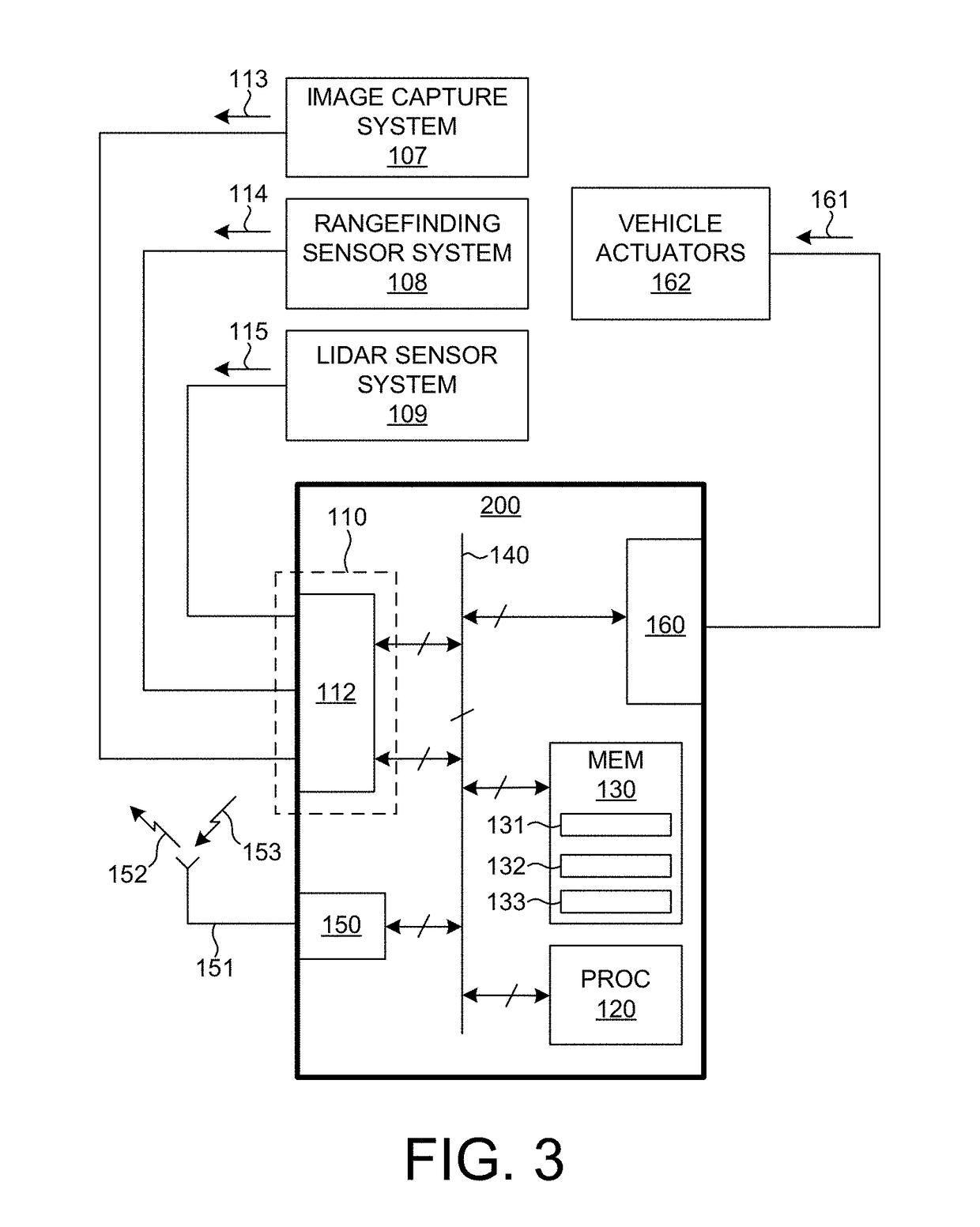Navigation Of Mobile Robots Based On Passenger Following
a mobile robot and passenger technology, applied in the direction of vehicle position/course/altitude control, process and machine control, instruments, etc., can solve the problems of pedestrian collisions, difficult, if not impossible, to successfully navigate to the desired endpoint location, etc., to avoid collisions
- Summary
- Abstract
- Description
- Claims
- Application Information
AI Technical Summary
Benefits of technology
Problems solved by technology
Method used
Image
Examples
Embodiment Construction
[0018]Reference will now be made in detail to background examples and some embodiments of the invention, examples of which are illustrated in the accompanying drawings.
[0019]Methods and systems for navigating a mobile robot through a crowded pedestrian environment by selecting and following a particular pedestrian are described herein. A crowded, pedestrian environment includes significant flows of moving people (e.g., a train station, a hospital environment, an airport, etc.). Pedestrians moving in similar directions in a crowded environment tend to move as a group and form a pedestrian flow. Often, pedestrians are able to join or leave the group with minimal disturbance to the overall pedestrian flow by occupying an open space behind a pedestrian participating in the flow and closely following the pedestrian.
[0020]In one aspect, a mobile robot navigates through a crowded pedestrian environment by selecting a particular pedestrian and following the selected pedestrian; effectively ...
PUM
 Login to View More
Login to View More Abstract
Description
Claims
Application Information
 Login to View More
Login to View More - R&D
- Intellectual Property
- Life Sciences
- Materials
- Tech Scout
- Unparalleled Data Quality
- Higher Quality Content
- 60% Fewer Hallucinations
Browse by: Latest US Patents, China's latest patents, Technical Efficacy Thesaurus, Application Domain, Technology Topic, Popular Technical Reports.
© 2025 PatSnap. All rights reserved.Legal|Privacy policy|Modern Slavery Act Transparency Statement|Sitemap|About US| Contact US: help@patsnap.com



